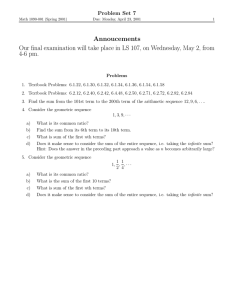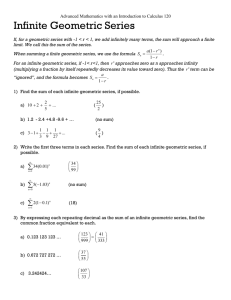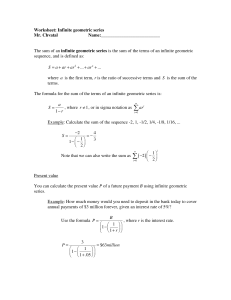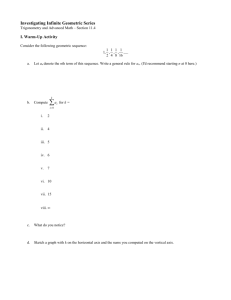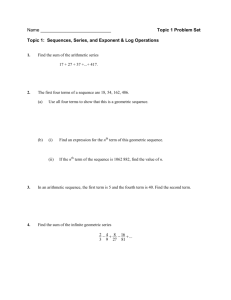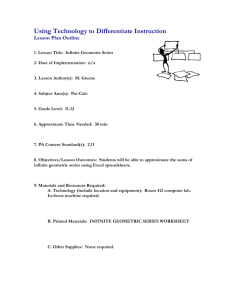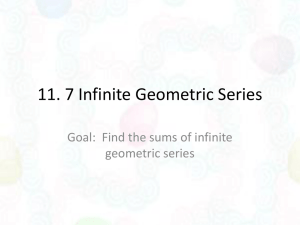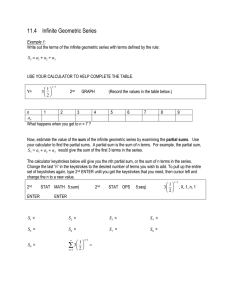11.4 Infinite Geometric Series
advertisement
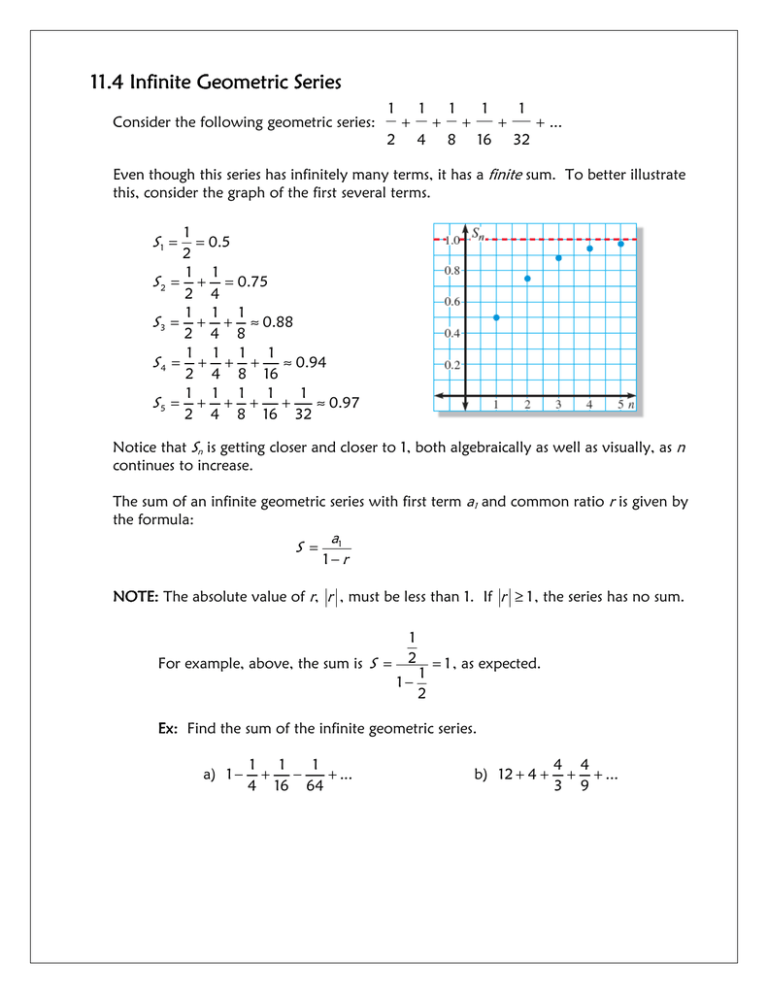
11.4 Infinite Geometric Series Consider the following geometric series: 1 1 + 2 1 + 4 1 + 1 + 8 16 + ... 32 Even though this series has infinitely many terms, it has a finite sum. To better illustrate this, consider the graph of the first several terms. 1 = 0.5 2 1 1 = + = 0.75 2 4 1 1 1 = + + ≈ 0.88 2 4 8 1 1 1 1 = + + + ≈ 0.94 2 4 8 16 1 1 1 1 1 = + + + + ≈ 0.97 2 4 8 16 32 S1 = S2 S3 S4 S5 Notice that Sn is getting closer and closer to 1, both algebraically as well as visually, as n continues to increase. The sum of an infinite geometric series with first term a1 and common ratio r is given by the formula: S = a1 1−r NOTE: The absolute value of r, r , must be less than 1. If r ≥ 1 , the series has no sum. For example, above, the sum is S = 1 2 1− 1 2 = 1 , as expected. Ex: Find the sum of the infinite geometric series. a) 1 − 1 1 1 + − + ... 4 16 64 b) 12 + 4 + 4 4 + + ... 3 9 Ex: Find the sum of the infinite geometric series. ∞ c) 3(0.7)n −1 ∑ n =1 ∞ d) 2(0.1)n −1 ∑ n =1 Ex: An infinite geometric series with first term a1 = 4 has a sum of 10. What is the common ratio of the series? Ex: An infinite geometric series with first term a1 = 5 has a sum of the common ratio of the series? 27 . What is 5 Writing a Repeating Decimal as a Fraction Ex: Ex Write 0.181818…as a fraction. Ex: Write 0.416666…as a fraction.

